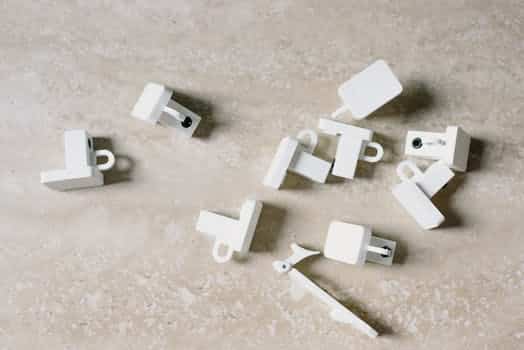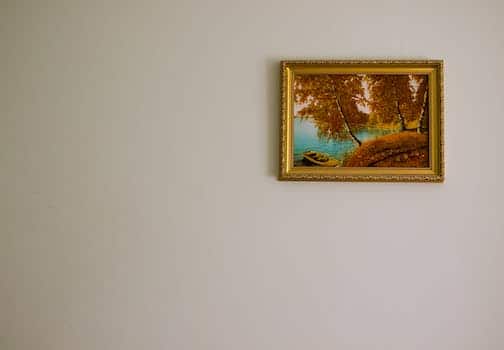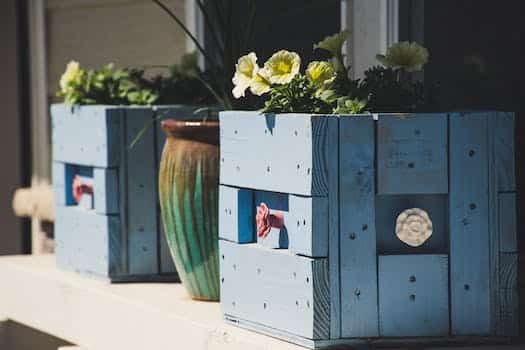When it comes to creating a visually appealing and functional space, two terms often come to mind: home decor and interior design. While these terms are sometimes used interchangeably, they actually have distinct differences. Home decor refers to the art of selecting and arranging furnishings, accessories, and decorative elements to enhance the aesthetics of a home. On the other hand, interior design involves a more comprehensive approach, encompassing both the aesthetic and functional aspects of a space. In this article, we will delve into the distinction between home decor and interior design, exploring their unique characteristics and the role they play in transforming a house into a personalized sanctuary.
- 1. Introduction
- 2. Purpose
- 2.1. Enhancing aesthetics and functionality
- 2.2. Creating a cohesive look
- 2.3. Reflecting personal style
- 2.4. Improving the quality of life
- 2.5. Increasing property value
- 3. Scope of Work
1. Introduction
Home decor and interior design are often used interchangeably, but they actually refer to two distinct concepts in the world of aesthetics and functionality. While both involve enhancing the appearance and feel of a space, they differ in their focus and approach.
Home decor primarily deals with the selection and arrangement of furniture, accessories, and decorative elements to create a visually appealing and cohesive atmosphere. It involves choosing colors, patterns, textures, and styles that reflect the homeowner’s personality and taste. Home decor is all about personalizing a space and making it feel like a true reflection of the people who live there.
On the other hand, interior design goes beyond just the surface-level aesthetics. It involves a more comprehensive process of planning and designing a space to optimize its functionality and meet specific needs. Interior designers consider factors such as the layout, flow, and purpose of a room while creating a design that not only looks great but also enhances the practicality and usability of the space.
In summary, home decor focuses on the decorative aspects of a space, while interior design takes a holistic approach to create functional and aesthetically pleasing environments. Understanding the distinction between the two can help homeowners and design enthusiasts better articulate their needs and expectations when seeking professional assistance or embarking on a DIY project.
1.1. Definition of home decor
Home decor refers to the art and science of enhancing the interior of a house or any other living space. It involves the use of various elements such as furniture, color schemes, lighting, accessories, and other decorative items to create a visually appealing and functional environment. Home decor is not just about making a space look beautiful, but also about creating a space that reflects the personality and taste of the homeowner. It is a way to express oneself and create a comfortable and inviting atmosphere within the confines of a home.
1.2. Definition of interior design
Interior design refers to the art and science of enhancing the interior of a space, such as a room or a building, to achieve a healthier and more aesthetically pleasing environment for the people using it. It involves the selection and arrangement of decorative elements, furniture, colors, textures, and materials to create a harmonious and functional space. Interior designers work with clients to understand their needs, preferences, and budget, and then create designs that align with their vision while considering factors like safety, accessibility, and sustainability. Through the clever use of design principles and techniques, interior designers transform ordinary spaces into captivating and functional areas that reflect the personality and style of the occupants.
2. Purpose
When it comes to creating a beautiful and functional space, there are two terms that are often used interchangeably: home decor and interior design. While they may seem similar, there are distinct differences between the two.
Home decor refers to the aesthetics and style of a space. It involves selecting and arranging furniture, accessories, and decorative elements to enhance the overall look and feel of a room. Home decor focuses on the visual aspects of a space and aims to create a cohesive and pleasing atmosphere.
On the other hand, interior design goes beyond just the aesthetics. It is a more comprehensive approach that involves not only the visual elements but also the functionality and efficiency of a space. Interior design takes into consideration the layout, flow, and purpose of a room, and aims to create a space that is both visually appealing and practical.
While home decor can be seen as a subset of interior design, the two terms are not interchangeable. Home decor is more focused on the decorative aspects, while interior design encompasses a broader range of considerations.
In conclusion, understanding the distinction between home decor and interior design is essential when it comes to creating a well-designed space. Whether you are looking to enhance the aesthetics of your home or improve its functionality, knowing the difference will help you make informed decisions and achieve your desired results.
2.1. Enhancing aesthetics and functionality
Enhancing aesthetics and functionality are two key aspects when it comes to home decor and interior design. While both disciplines revolve around enhancing the visual appeal and functionality of a space, there are distinct differences between the two.
Home decor primarily focuses on the aesthetics of a space, encompassing the selection of furniture, color schemes, lighting, and decorative elements. It aims to create a visually pleasing and harmonious environment that reflects the homeowner’s personal style and preferences.
On the other hand, interior design goes beyond just the aesthetics and delves into the functionality and spatial planning of a space. It involves a more comprehensive approach, considering factors such as traffic flow, ergonomics, and the overall layout. Interior designers often work closely with architects and contractors to ensure that the space is not only visually appealing but also practical and efficient.
While home decor allows individuals to express their creativity and style through the selection of decorative items, interior design takes a more holistic approach by considering the functionality and purpose of each element within the space. It strives to create a harmonious balance between aesthetics and functionality, resulting in a well-designed and livable space.
In summary, home decor and interior design are closely related yet distinct disciplines. While home decor focuses on the visual aspects and personal style, interior design encompasses the functionality and overall planning of a space. Both are essential in creating a beautiful and functional living environment.
2.2. Creating a cohesive look
Creating a cohesive look for your home decor or interior design is essential to achieving a harmonious and visually appealing space. Whether you are focusing on home decor or interior design, the purpose of this article is to highlight the distinction between the two concepts and provide insights into how to create a cohesive look for each.
Home decor refers to the aesthetics and style choices that enhance and beautify a living space. It involves selecting and arranging furniture, accessories, color schemes, and other decorative elements to create a desired atmosphere. Home decor allows individuals to express their personal tastes and preferences within their living spaces.
On the other hand, interior design goes beyond just the aesthetics and focuses on the functionality and overall layout of a space. Interior design professionals consider factors such as traffic flow, spatial planning, lighting, and ergonomics to optimize the functionality and efficiency of a space. While aesthetics are still important in interior design, the primary goal is to create a space that is both visually appealing and functional.
To create a cohesive look for your home decor, it is important to consider elements such as color coordination, pattern mixing, and theme consistency. Choosing a color palette and sticking to it throughout your space can help create a unified look. Mixing patterns can add visual interest, but it is essential to strike a balance and ensure that the patterns complement each other. Additionally, maintaining a consistent theme or style throughout your home decor, whether it’s modern, traditional, or eclectic, can help tie everything together.
When it comes to interior design, creating a cohesive look involves not only considering aesthetics but also the functionality of the space. It is important to analyze the layout of the room and ensure that furniture placement promotes a smooth traffic flow. Lighting plays a crucial role in interior design, as it can enhance the ambiance and functionality of a space. It is also important to consider the ergonomics of furniture and ensure that it provides comfort and support.
In conclusion, while home decor and interior design are related concepts, they have distinct purposes. Home decor focuses on enhancing the aesthetics and style of a living space, allowing individuals to express their personal tastes. Interior design goes beyond aesthetics and considers the functionality and overall layout of a space. To create a cohesive look for both home decor and interior design, it is important to consider factors such as color coordination, pattern mixing, theme consistency, furniture placement, lighting, and ergonomics.
2.3. Reflecting personal style
Reflecting personal style is an essential aspect of both home decor and interior design. It allows individuals to express their unique taste, personality, and preferences in the aesthetic of their living spaces. Whether it’s a cozy cottage, a modern minimalist apartment, or a luxurious mansion, personal style adds a distinct touch to any interior.
In the realm of home decor, reflecting personal style becomes the primary focus. It involves selecting furniture, accessories, colors, patterns, and textures that align with one’s individuality. Home decor allows individuals to create a space that is not only visually appealing but also resonates with their personal values and interests.
On the other hand, interior design takes personal style a step further by incorporating functionality and spatial planning. While still considering personal preferences, interior design focuses on optimizing the layout and flow of a space to enhance its usability and functionality. It involves creating harmonious compositions, balancing architectural elements, and integrating practical solutions.
Ultimately, reflecting personal style in both home decor and interior design is about creating a space that feels like a true reflection of oneself. It allows individuals to surround themselves with a supportive and inspiring environment that nurtures their well-being and happiness. Whether one leans towards a specific design style or prefers an eclectic mix, personal style is the key to making a house feel like a home.
2.4. Improving the quality of life
Improving the quality of life is a common goal for many individuals. One way to achieve this is by creating a space that is aesthetically pleasing, functional, and reflective of one’s personality. This is where the distinction between home decor and interior design becomes important. While the terms are often used interchangeably, they actually refer to different aspects of creating a living environment. Understanding this difference can help individuals make informed decisions when it comes to enhancing their living spaces.
2.5. Increasing property value
Increasing property value is a crucial aspect for homeowners and real estate investors. By enhancing the aesthetics and functionality of a property, its value can significantly rise. This article explores the importance of home decor and interior design in achieving this goal.
3. Scope of Work
The scope of work for the article ‘The Distinction: Home Decor vs. Interior Design’ encompasses exploring the differences between home decor and interior design. This article aims to provide a comprehensive understanding of the two terms, highlighting their unique aspects and the role they play in enhancing the aesthetics and functionality of a space. Through in-depth research and analysis, the article will delve into various elements of home decor and interior design, such as color schemes, furniture selection, spatial planning, lighting, and accessorizing. It will also discuss the significance of each discipline in creating personalized and harmonious living environments. By the end of the article, readers will have a clear understanding of the distinctions between home decor and interior design, enabling them to make informed decisions when it comes to transforming their living spaces.
3.1. Selection of furniture and accessories
When it comes to creating a beautifully designed space, the selection of furniture and accessories plays a crucial role. The right furniture and accessories can enhance the overall aesthetic appeal and functionality of a room. Whether you are redecorating your home or designing a new space, it is important to carefully consider the selection of furniture and accessories.
The first step in selecting furniture and accessories is to assess the needs and requirements of the space. Consider the purpose of the room and the activities that will take place in it. For example, a living room may require comfortable seating options such as sofas and armchairs, while a dining room may need a sturdy dining table and chairs.
Once the needs of the space are determined, it is important to consider the style and theme of the room. The furniture and accessories should complement and enhance the overall design concept. Whether you prefer a modern, minimalist look or a traditional, classic style, there are furniture and accessory options available to suit every taste.
In addition to style, it is essential to consider the size and scale of the furniture and accessories. The pieces should be proportionate to the size of the room to create a balanced and visually appealing space. Oversized furniture in a small room can make it feel cramped, while small accessories in a large room may get lost and lack impact.
Quality is another important factor to consider when selecting furniture and accessories. Investing in well-made, durable pieces can ensure longevity and a timeless appeal. Look for furniture made from high-quality materials such as solid wood or premium upholstery fabrics. Similarly, accessories made from quality materials like glass, metal, or ceramic can add a touch of elegance to any room.
Lastly, consider the functionality and practicality of the furniture and accessories. While aesthetics are important, it is equally vital to choose pieces that serve their intended purpose. Think about storage options, ease of maintenance, and the overall usability of the items.
In conclusion, the selection of furniture and accessories is a significant aspect of interior design. By carefully considering the needs of the space, the style and theme, the size and scale, the quality, and the functionality, you can create a well-designed and cohesive space that reflects your personal style and enhances your daily living experience.
3.2. Color schemes and patterns
Choosing the right color schemes and patterns is an essential aspect of both home decor and interior design. These elements play a crucial role in creating a harmonious and visually appealing space. Whether you are redecorating a single room or revamping your entire home, selecting the perfect color combinations and patterns can transform the atmosphere and enhance the overall aesthetics.
Color schemes refer to the combinations of colors used in a particular space. They can evoke various emotions and set the mood for the room. For instance, warm color schemes like reds, oranges, and yellows create a cozy and energetic ambiance, while cool color schemes like blues, greens, and purples bring a sense of tranquility and calmness.
Patterns, on the other hand, add visual interest and texture to a space. They can be incorporated through wallpapers, fabrics, rugs, or even decorative accessories. From geometric patterns to floral prints, the options are endless. However, it is important to strike a balance and not overcrowd the room with too many patterns. Mixing and matching different patterns can create a dynamic and unique look.
In the scope of work for both home decor and interior design, professionals focus on understanding the client’s preferences and requirements. They analyze the existing space, taking into consideration factors such as lighting, architectural elements, and functionality. When it comes to color schemes, designers work closely with clients to determine their desired atmosphere and style. They consider the room’s purpose and the occupants’ personalities to create a cohesive color palette.
Additionally, professionals in this field also consider patterns as part of the scope of work. They explore various options and suggest patterns that complement the overall design concept. The goal is to create a space that reflects the client’s taste and preferences while ensuring that the patterns blend seamlessly with the color scheme.
In conclusion, color schemes and patterns are vital components of both home decor and interior design. They have the power to transform a space and create a visually pleasing environment. Professionals in this field carefully consider these elements and work closely with clients to achieve their desired aesthetic vision.
3.3. Lighting and fixtures
When it comes to home decor and interior design, lighting and fixtures play a crucial role in creating the desired ambiance and enhancing the overall aesthetic appeal of a space. The scope of work for lighting and fixtures in both home decor and interior design projects is extensive, encompassing various aspects such as choosing the right types of lighting, selecting appropriate fixtures, and strategically placing them to achieve optimal lighting effects.
In home decor, lighting and fixtures are utilized to highlight specific areas, objects, or architectural features in a room. They can be used to create focal points, add depth and dimension, or simply illuminate a space. Depending on the desired atmosphere, different types of lighting fixtures such as chandeliers, pendant lights, wall sconces, or table lamps can be used.
Interior design takes lighting and fixtures a step further by considering the overall design concept, functionality, and mood of a space. In addition to decorative lighting, functional lighting is also important in interior design. Task lighting, ambient lighting, and accent lighting are all carefully planned and incorporated to serve different purposes. For instance, task lighting is essential in areas such as kitchen countertops or study desks where specific tasks need to be performed efficiently.
The selection of lighting fixtures in both home decor and interior design projects requires careful consideration of factors such as the size and layout of the space, the color scheme, and the overall style or theme. It is important to choose fixtures that not only complement the existing decor but also contribute to the desired atmosphere and functionality of the space.
In conclusion, lighting and fixtures play a vital role in both home decor and interior design. They go beyond mere illumination and serve as important design elements that can transform a space into a visually appealing and functional environment.
3.4. Flooring and wall treatments
When it comes to transforming the look and feel of a space, flooring and wall treatments play a crucial role. These elements not only provide aesthetic appeal but also contribute to the overall functionality and ambiance of a room. From the selection of materials to the installation process, every detail matters when it comes to creating a beautiful and functional space.
Flooring options are vast and varied, ranging from classic hardwood to contemporary tiles. Each type of flooring has its own unique qualities and advantages, and the choice depends on factors such as the room’s purpose, the desired style, and the budget. Hardwood flooring, for instance, adds warmth and elegance to a room, while tiles offer durability and easy maintenance. Other popular flooring choices include laminate, vinyl, carpet, and natural stone.
Wall treatments, on the other hand, encompass a wide range of options such as paint, wallpaper, paneling, and textured finishes. The color and texture of walls can dramatically impact the mood and atmosphere of a space. Lighter shades can make a room appear larger and more airy, while darker hues can create a cozy and intimate feel. Wallpaper with bold patterns or textured finishes can add visual interest and depth to a room.
In terms of the scope of work, flooring and wall treatments involve several key steps. These include assessing the existing space, measuring and calculating the required materials, preparing the surface, and executing the installation or application process. Attention to detail and precision are essential to ensure a seamless and professional finish.
Overall, flooring and wall treatments are essential components of interior design. They not only enhance the visual appeal of a space but also contribute to its functionality and overall ambiance. Whether it’s choosing the right flooring material or selecting the perfect wall treatment, every decision plays a crucial role in creating a well-designed and cohesive space.
3.5. Space planning and layout
Space planning and layout play a crucial role in both home decor and interior design. When it comes to creating functional and aesthetically pleasing spaces, proper space planning is essential. It involves analyzing the available space, determining the purpose of the area, and arranging furniture, fixtures, and other elements to optimize the layout.
In the context of home decor, space planning focuses on maximizing the use of space while incorporating personal style and preferences. It considers factors such as the size and shape of the room, traffic flow, and the placement of furniture and accessories. The goal is to create a harmonious and comfortable environment that reflects the homeowner’s taste.
On the other hand, interior design goes beyond space planning and encompasses a broader scope of work. It involves not only the layout and arrangement of furniture but also the selection of color schemes, materials, lighting, and other decorative elements. Interior designers work closely with clients to understand their specific needs and create customized designs that enhance the functionality and aesthetics of a space.
Overall, space planning is an integral part of both home decor and interior design. It sets the foundation for creating well-designed and functional spaces, whether it’s a cozy living room or a luxurious bedroom. By carefully considering the scope of work and applying effective space planning techniques, professionals in the field can transform ordinary spaces into extraordinary ones.
Conclusion
In conclusion, while home decor and interior design are closely related, they have distinct differences. Home decor focuses on the aesthetics and style of a space, while interior design involves a more comprehensive approach, considering functionality, space planning, and creating cohesive designs. Both aspects are essential in transforming a house into a beautiful and functional home.






13 Comments
Karissa Dodi
1 year agoWow, this post really caught my attention! Ive always been interested in home decor and interior design, but I never quite understood the differences between the two. Its great to finally have some clarity on this topic. Creating a personalized and functional living space is so important to me, and now I can see how both home decor and interior design play crucial roles in achieving that. Thanks for the valuable insights!
Tova Seem
1 year agoWhoa, hold up! Lets talk about home decor versus interior design! 🏠✨ Its like the ultimate battle between your sense of style and making your living space actually work for you. 💪🎨 Home decor is all about the little details that showcase your personality and make your space feel cozy or fancy or totally out-of-this-world! 🌟🎉 Interior design, on the other hand, is like the mastermind behind the scenes, creating a functional and well-planned layout that flows like a smooth dance routine. 🚀💃 So, in a nutshell, home decor is the beautiful icing on the cake, while interior design is the secret recipe that makes the cake taste amazing! 🍰💫 Now, lets go unleash the magic and create our dream living space, shall we? ✨🏰💖
Corina Valerle
1 year agoAh, the eternal quest for the perfect living space! 🏡 Its fascinating to delve into the intricate world of home decor and interior design, two realms that beautifully intertwine yet possess their own unique qualities. 🎨💡
Home decor, like an artists brushstrokes on a canvas, allows us to sprinkle our personality and style into our living spaces. Its all about those charming details, delightful accents, and personal touches that make a house feel like a true home. From artful wall hangings to whimsical throw pillows, home decor is the magical potion that injects character and warmth into every nook and cranny. Its where we can showcase our cherished collections, display vibrant colors that reflect our moods, and curate an environment that resonates with our soul. ✨🌈
On the other hand, interior design takes the canvas and transforms it into a masterpiece. It goes beyond mere aesthetic preferences, focusing on the functionality and flow of a space. Interior design is like a symphony conductor, orchestrating the layout, furniture placement, and spatial organization to create a harmonious and efficient environment. Its the art of optimizing every square inch, ensuring that our living space not only looks stunning but also feels comfortable and practical. From clever storage solutions to maximizing natural light, interior design breathes life into the bones of our homes, creating a seamless balance between beauty and functionality. 🎶☀️
Together, home decor and interior design dance hand in hand, weaving a tapestry of personal expression and functionality. They complement each other, enhancing the overall ambiance and ensuring that our living space truly reflects who we are. So, whether youre a lover of vintage treasures or a minimalist enthusiast, remember that both home decor and interior design are your allies in crafting a personalized sanctuary. Embrace the journey, let your creativity soar, and watch in awe as your living space transforms into a true masterpiece! 🌟✨
Giovanna Helbonia
1 year agoThat sounds like a fascinating topic! Ive always been curious about the distinctions between home decor and interior design. Its amazing how each plays a unique role in transforming a house into a personalized and functional living space. I cant wait to delve deeper into this subject and discover the key differences.
Nalani Kwei
1 year agoThank you for sharing this informative post on the key differences between home decor and interior design. It is crucial for individuals to understand these distinctions as they play a vital role in creating a personalized and functional living space. Home decor focuses on the aesthetic aspects of a home, including furniture, accessories, and color schemes, while interior design goes beyond that to encompass the overall layout, functionality, and flow of a space. By grasping these differences, individuals can make more informed decisions when transforming their homes into a place that reflects their unique style and enhances their daily lives.
Leslie Freytag
1 year agoWow, this post really helped me understand the distinction between home decor and interior design! I used to think they were the same thing, but now I see how they work together to create a personalized and functional living space. Its like the difference between having nice furniture and actually arranging it in a way that enhances the overall aesthetic and functionality of a room. Thanks for shedding light on this topic!
Cami Loftus
1 year agoOh, Ive always wondered about the difference between home decor and interior design! From what I understand, home decor focuses more on the aesthetic aspects of a living space, like furniture, accessories, and color schemes. Its all about adding those personal touches that reflect your style and personality. On the other hand, interior design goes beyond just the looks and takes into account functionality, layout, and the overall flow of the space. Its about optimizing the use of the area and creating a harmonious ambiance. Both play a significant role in making a house feel like a home!
Lilla Hinkle
1 year agoWow, this post really opened my eyes to the distinction between home decor and interior design! I always thought they were the same thing, but now I understand how they each play a unique role in creating a personalized and functional living space. Its fascinating to learn how home decor focuses on the aesthetics and decorative elements, while interior design takes a more holistic approach, considering functionality, layout, and even the psychology of space. Thanks for shedding light on this topic!
Maisie Sibylle
1 year agoWow, this article really opened my eyes to the distinctions between home decor and interior design. I used to think they were the same thing, but now I understand that while home decor focuses on the aesthetics and style, interior design goes beyond that to consider functionality and spatial planning. Its fascinating how both elements work hand in hand to create a personalized and functional living space. Thanks for shedding light on this topic!
Rona Hutner
1 year agoAs a normal human visitor, I found this post to be highly informative and insightful. Its crucial to understand the distinctions between home decor and interior design in order to achieve a personalized and functional living space. By delving into the key differences, readers can gain a deeper understanding of how these elements work together harmoniously. Well done on providing valuable knowledge on this subject!
Ileana Arva
1 year agoWow, this post is so helpful! Ive always wondered about the differences between home decor and interior design. Its great to finally understand that home decor focuses more on the aesthetics and styling of a space, while interior design encompasses the overall planning and functionality. I can already see how both aspects work together to create a personalized and functional living space. Thanks for breaking it down for us!
Bobbee Feigin
1 year agoOh, Ive always wondered about the differences between home decor and interior design! Its fascinating to learn how each plays a role in creating a personalized and functional living space. Cant wait to dive into this article and gain some insights!
Bee Vernita
1 year agoThe key differences between home decor and interior design lie in their respective roles in creating a personalized and functional living space. While home decor focuses on the aesthetics and visual appeal, interior design goes beyond that by encompassing the overall layout, functionality, and optimization of the space.
Home decor involves selecting and arranging various elements such as furniture, accessories, color schemes, and textiles to enhance the visual appeal of a room or a home. It revolves around creating a specific style or theme, reflecting the individuals personal taste and preferences. Home decor allows for creativity and self-expression, adding personality to the living space.
On the other hand, interior design takes a holistic approach to transform a space into a practical and functional environment. It involves careful planning, considering factors like spatial layout, traffic flow, lighting, and ergonomics. Interior designers analyze the available space and create a design that optimizes functionality, ensuring that the room or home serves its intended purpose efficiently.
While home decor focuses on enhancing the aesthetics, interior design aims to strike a balance between aesthetics and functionality. It involves thorough knowledge of design principles, building codes, and architectural elements. Interior designers often collaborate with architects and contractors to ensure the integration of design elements during the construction or renovation process.
In summary, home decor and interior design differ in their scope and objectives. Home decor emphasizes the visual appeal and personalization of a space, while interior design encompasses a broader range of considerations, including functionality, spatial planning, and optimization. Both play crucial roles in creating a personalized and functional living space, complementing each other to achieve a harmonious and well-designed home.